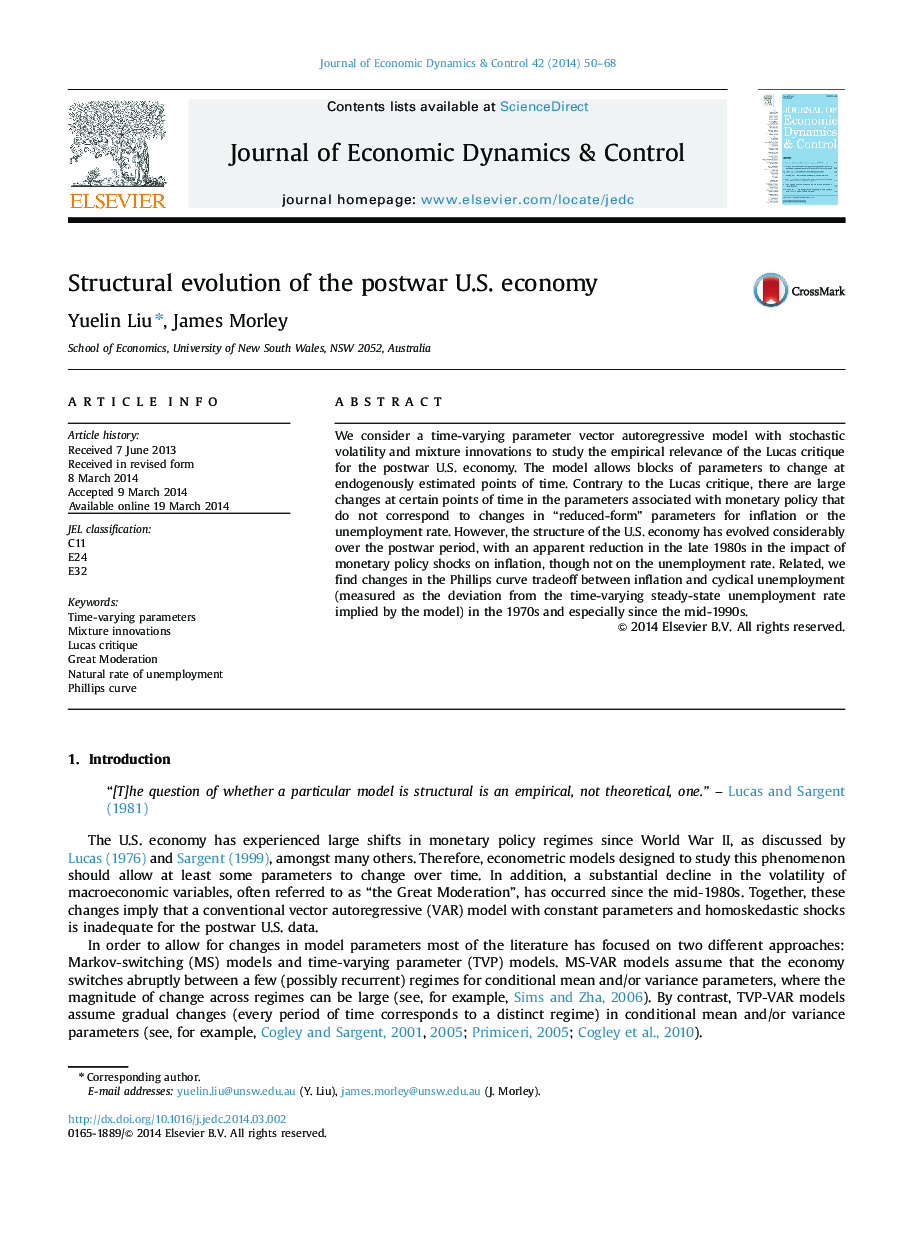| Article ID | Journal | Published Year | Pages | File Type |
|---|---|---|---|---|
| 5098438 | Journal of Economic Dynamics and Control | 2014 | 19 Pages |
Abstract
We consider a time-varying parameter vector autoregressive model with stochastic volatility and mixture innovations to study the empirical relevance of the Lucas critique for the postwar U.S. economy. The model allows blocks of parameters to change at endogenously estimated points of time. Contrary to the Lucas critique, there are large changes at certain points of time in the parameters associated with monetary policy that do not correspond to changes in “reduced-form” parameters for inflation or the unemployment rate. However, the structure of the U.S. economy has evolved considerably over the postwar period, with an apparent reduction in the late 1980s in the impact of monetary policy shocks on inflation, though not on the unemployment rate. Related, we find changes in the Phillips curve tradeoff between inflation and cyclical unemployment (measured as the deviation from the time-varying steady-state unemployment rate implied by the model) in the 1970s and especially since the mid-1990s.
Keywords
Related Topics
Physical Sciences and Engineering
Mathematics
Control and Optimization
Authors
Yuelin Liu, James Morley,
